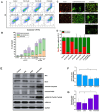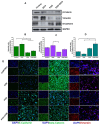Pentagalloyl Glucose from Bouea macrophylla Suppresses the Epithelial-Mesenchymal Transition and Synergizes the Doxorubicin-Induced Anticancer and Anti-Migration Effects in Triple-Negative Breast Cancer
- PMID: 39770571
- PMCID: PMC11679756
- DOI: 10.3390/ph17121729
Pentagalloyl Glucose from Bouea macrophylla Suppresses the Epithelial-Mesenchymal Transition and Synergizes the Doxorubicin-Induced Anticancer and Anti-Migration Effects in Triple-Negative Breast Cancer
Abstract
Background: Triple-negative breast cancer (TNBC) represents an aggressive form of breast cancer with few available therapeutic options. Chemotherapy, particularly with drugs like doxorubicin (DOX), remains the cornerstone of treatment for this challenging subtype. However, the clinical utility of DOX is hampered by adverse effects that escalate with higher doses and drug resistance, underscoring the need for alternative therapies. This study explored the efficacy of pentagalloyl glucose (PGG), a natural polyphenol derived from Bouea macrophylla, in enhancing DOX's anticancer effects and suppressing the epithelial-mesenchymal transition (EMT) in TNBC cells. Methods: This study employed diverse methodologies to assess the effects of PGG and DOX on TNBC cells. MDA-MB231 triple-negative breast cancer cells were used to evaluate cell viability, migration, invasion, apoptosis, mitochondrial membrane potential, and protein expression through techniques including MTT assays, wound healing assays, flow cytometry, Western blotting, and immunofluorescence. Results: Our findings demonstrate that PGG combined with DOX significantly inhibits TNBC cell proliferation, migration, and invasion. PGG enhances DOX-induced apoptosis by disrupting the mitochondrial membrane potential and activating caspase pathways; consequently, the activation of caspase-3 and the cleavage of PARP are increased. Additionally, the study shows that the combination treatment upregulates ERK signaling, further promoting apoptosis. Moreover, PGG reverses DOX-induced EMT by downregulating mesenchymal markers (vimentin and β-catenin) and upregulating epithelial markers (E-cadherin). Furthermore, it effectively inhibits STAT3 phosphorylation, associated with cell survival and migration. Conclusions: These results highlight the potential of PGG as an adjuvant therapy in TNBC treatment. PGG synergizes with DOX, which potentiates its anticancer effects while mitigating adverse reactions.
Keywords: doxorubicin; epithelial–mesenchymal transition (EMT); pentagalloyl glucose (PGG); synergistic; triple-negative breast cancer (TNBC).
Conflict of interest statement
The authors declare no conflicts of interest. The funders had no role in the design of the study; the collection, analysis, or interpretation of data; the writing of the manuscript; or the decision to publish the results.
Figures








Similar articles
-
Pentagalloyl glucose targets the JAK1/JAK3-STAT3 pathway to inhibit cancer stem cells and epithelial-mesenchymal transition in 5-fluorouracil-resistant colorectal cancer.Phytomedicine. 2025 Jul;142:156773. doi: 10.1016/j.phymed.2025.156773. Epub 2025 Apr 16. Phytomedicine. 2025. PMID: 40378534
-
Dual-target MDM2/MDMX inhibitor increases the sensitization of doxorubicin and inhibits migration and invasion abilities of triple-negative breast cancer cells through activation of TAB1/TAK1/p38 MAPK pathway.Cancer Biol Ther. 2019;20(5):617-632. doi: 10.1080/15384047.2018.1539290. Epub 2018 Nov 21. Cancer Biol Ther. 2019. PMID: 30462562 Free PMC article.
-
AQP5 promotes epithelial-mesenchymal transition and tumor growth through activating the Wnt/β-catenin pathway in triple-negative breast cancer.Mutat Res. 2024 Jul-Dec;829:111868. doi: 10.1016/j.mrfmmm.2024.111868. Epub 2024 Jun 12. Mutat Res. 2024. PMID: 38959561
-
Pentagalloyl Glucose: A Review of Anticancer Properties, Molecular Targets, Mechanisms of Action, Pharmacokinetics, and Safety Profile.Molecules. 2023 Jun 19;28(12):4856. doi: 10.3390/molecules28124856. Molecules. 2023. PMID: 37375411 Free PMC article. Review.
-
Triple-Negative Breast Cancer Progression and Drug Resistance in the Context of Epithelial-Mesenchymal Transition.Cancers (Basel). 2025 Jan 12;17(2):228. doi: 10.3390/cancers17020228. Cancers (Basel). 2025. PMID: 39858010 Free PMC article. Review.
References
Grants and funding
LinkOut - more resources
Full Text Sources
Research Materials
Miscellaneous

